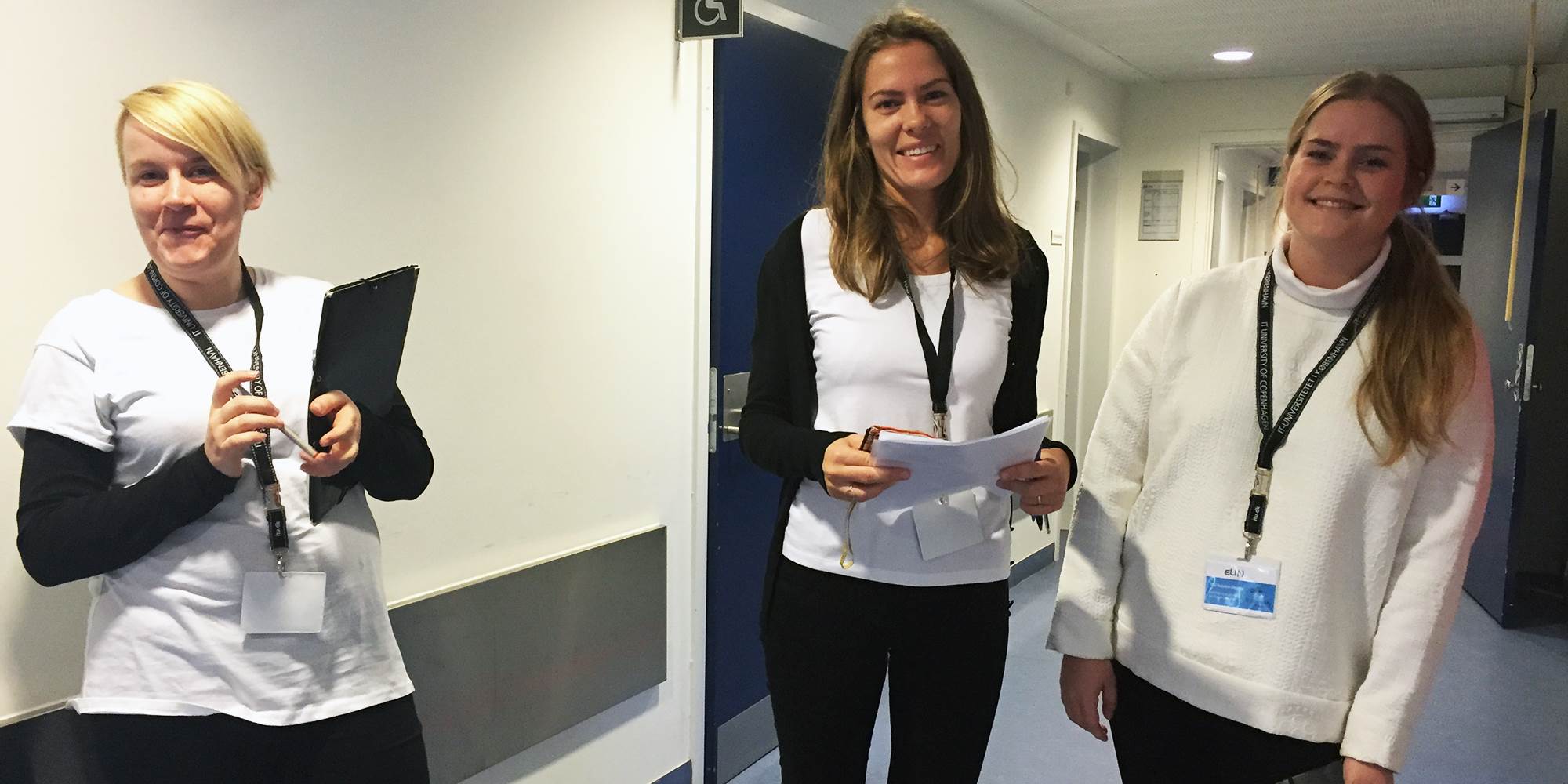Students collaborate with local hospital in wayfinding project
Intricate hallways and confusing signage present challenges for patients, visitors and staff alike at Amager Hospital. As a part of their education in Service Design, students from the IT University developed new wayfinding solutions for the hospital.
CollaborationsEducationErik Grönvalldesign
Written 25 November, 2015 08:30 by Vibeke Arildsen
Amager Hospital is located in a picturesque brick building from the late 1800s. However, a multitude of stairways, nooks and ambiguous signs often leads to confusion among visitors. It does not help that many sections have relocated in recent years – since the signage has not always followed.
In collaboration with the design company Triagonal, Amager Hospital invited students from Digital Design and Communication to come up with solutions for this wayfinding challenge.
Wayfinding in practice
In the Service Design course, students learn to develop user-friendly design solutions, for example in the form of apps or digital information screens. However, the students look at more than just screens and signage. During the project, they observed and interviewed patients, nurses and other hospital staff.
Associate Professor Erik Grönvall explains:
"The students bring in a holistic perspective and look at the planning, expectations and communication surrounding the hospital visit. Part of it is about wayfinding, but it is also about the entire experience of the health care system - from the first contact until you get home."
He is pleased that students had the opportunity to apply their knowledge in practice.
"The collaboration with Amager Hospital and Triagonal provides students with tools and insights that you can only get with this type of hands-on work. It is also an opportunity for them to see what type of work they might end up doing. Many have perhaps not considered that a hospital could need their skills."
 Students based their wayfinding solutions partly on observations at Amager Hospital.Students also found the project fruitful.
Students based their wayfinding solutions partly on observations at Amager Hospital.Students also found the project fruitful.
"In class we get the theoretical background and methods, but working with a real case gives something extra. The leap from theory to practice becomes much smaller. Having to convey our ideas in a way that everybody can understand is a good challenge, "says Tom Buhl Larsen. His project group proposes setting up information kiosks that print personalized maps on arrival to the hospital.
Implementable solutions
In conclusion of the project, the students presented their solutions for Amager Hospital and Triagonal. Suggestions ranged from changes of the signage to interactive information screens and bracelets with built-in radio transmitters. Head Nurse Marie-Louise Frische from Amager Hospital went into the project hoping to get ideas for realistic wayfinding solutions. She sees potential in several of the proposals.
I would be happy to hire one of them one day if I had the money for it, because there is a need for people like them in health care.
Marie-Louise Frische, Head Nurse at Amager Hospital
"The students based their solutions on the hospital as it is, and attempted to improve it with their knowledge. This is professional, and I would be happy to hire one of them one day if I had the money for it, because there is a need for people like them in health care. It has been an exciting collaboration, and I will definitely have a second look at some of the suggestions, because I do think we can implement some of the ideas."